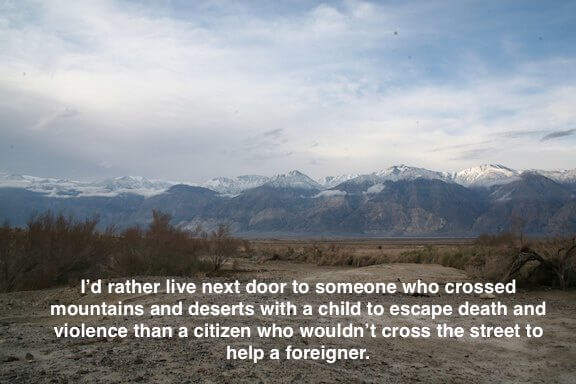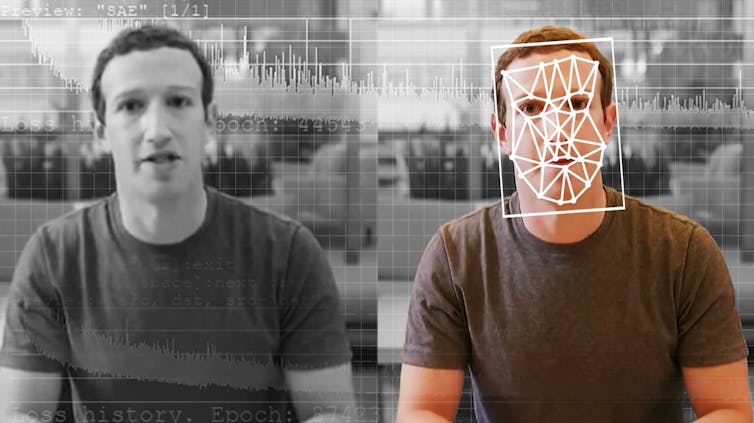
The world is dealing with an unprecedented health crisis caused by a new virus. With new insights in the way COVID19 spreads, in the way the virus behaves and in the way to deal with the pandemic every day, it is now more important than ever to safeguard the information we share is accurate and fact-based. We have to inoculate ourselves against the fake news and misinformation that infect our newsfeeds and timelines at this crucial moment by fact-checking.
Although the pandemic is far from over and probably not even nearing its peak, COVID-19 misinformation and disinformation are going in repeat mode with very few new ideas surfacing that need to be debunked. There are more than enough topics to look into and Fact-checkers are now looking to other sources where fact needs to be separated from fiction.*
I have scraped the bottom of the COVID-19 barrel of the last four weeks but have come up nearly empty for anything that is of interest outside Australia so I’ve decided to start with a short take on where so-called armchair experts on the Coronavirus could get it wrong.
NOW EVERYONE’S A STATISTICIAN: HERE’S WHAT ARMCHAIR COVID EXPERTS ARE GETTING WRONG
This article by Jacques Raubenheimer, a senior research fellow, Biostatistics, University of Sydney, appeared in The Conversation September 14th 2020.
If we don’t analyse statistics for a living, it’s easy to be taken in by misinformation about COVID-19 statistics on social media, especially if we don’t have the right context.
For instance, we may cherry pick statistics supporting our viewpoint and ignore statistics showing we are wrong. We also still need to correctly interpret these statistics.
It’s easy for us to share this misinformation. Many of these statistics are also interrelated, so misunderstandings can quickly multiply.
Here’s how we can avoid five common errors, and impress friends and family by getting the statistics right.
It’s the infection rate that’s scary, not the death rate
Social media posts comparing COVID-19 to other causes of death, such as the flu, imply COVID-19 isn’t really that deadly.
But these posts miss COVID-19’s infectiousness. For that, we need to look at the infection fatality rate (IFR) — the number of COVID-19 deaths divided by all those infected (a number we can only estimate at this stage; see also point 3 [in the original article]).
While the jury is still out, COVID-19 has a higher IFR than the flu. Posts implying a low IFR for COVID-19 most certainly underestimate it. They also miss two other points.
First, if we compare the typical flu IFR of 0.1 per cent with the most optimistic COVID-19 estimate of 0.25 per cent, then COVID-19 remains more than twice as deadly as the flu.
Second, and more importantly, we need to look at the basic reproduction number (R₀) for each virus. This is the number of extra people one infected person is estimated to infect.
Flu’s R₀ is about 1.3. Although COVID-19 estimates vary, its R₀ sits around a median of 2.8. Because of the way infections grow exponentially (see below), the jump from 1.3 to 2.8 means COVID-19 is vastly more infectious than flu.
When you combine all these statistics, you can see the motivation behind our public health measures to “limit the spread”. It’s not only that COVID-19 is so deadly, it’s deadly and highly infectious.
I’ve copied the introduction and the first of the six points made in the article for this short take. Please click through here to read all about the misconceptions we may have about:
Exponential growth and misleading graphs
Not all infections are cases
We can’t compare deaths with cases from the same date
Yes, the data are messy, incomplete and may change
‘FREEDOM DAY’ PROTESTERS SPREAD MISLEADING IMAGES
Anti-lockdown advocates planning to protest Australia-wide tomorrow at an event they have dubbed “Freedom Day” have used old images to support their claims that a similar protest in Berlin last weekend attracted 5 million people and saw police join in solidarity, researchers at First Draft reported.
In one example, an administrator for the Facebook group Millions Rise for Australia, which had nearly 120,000 members before it was removed from the platform this week, used images from 2016 and 2018 alongside a caption telling law enforcement groups in Australia to “choose their side”.
While some of those commenting on the post appeared to believe the photos were of the recent Berlin protest, First Draft found that one of the images showed police at a far-right rally in the city of Chemnitz in 2018, while the other was taken in 2016 at a protest against transatlantic trade deals.
In another example, Sydney protest organiser Michael Simms shared an image of what AFP Fact Check identified as a 1997 music festival in Berlin alongside a caption suggesting 5 million protesters from “all over Europe” had gathered in the German capital for a “Unite the Freedom Rally”.
According to First Draft, reports put the crowd size in Berlin last weekend at between 18,000 and 38,000, while “Unite the Freedom” was the name of a protest held in London.
Meanwhile, a Facebook post from anti-vaccination group Australian Vaccination-risks Network, also suggests Berlin’s protest turnout was in the millions, this time using a crowd photo that accompanied a 2018 article about Brexit.
How many people will turn out for Australia’s “Freedom Day” protests remains to be seen, but in Melbourne, where strict lockdown restrictions mean protesters could be fined $1,652 for attending, police have vowed to “take action against anyone who shows up on the day”.
“The stage 4 restrictions make it very clear that people cannot leave their home in order to protest,” Victoria Police Assistant Commissioner Luke Cornelius said at a media conference last week. “Organising and participating in this proposed protest would be a serious and blatant breach of the Chief Health Officer’s directions and it jeopardises the health of the entire community.”
Since then, Victoria Police have confirmed that multiple people involved in orchestrating the protest, including popular Facebook figure Fanos Panayides, have been arrested and charged with incitement.
FROM WASHINGTON, D.C.

A war of words has erupted between election hopefuls in the US, with President Donald Trump accusing Democratic Party nominee Joe Biden and running mate Kamala Harris of “undermining science and risking countless lives with reckless anti-vaccine rhetoric”.
But FactCheck.org found the claims that the two Democrats were against a vaccine to be false. Rather, both Mr Biden and Ms Harris have emphasised they are supportive of a safe and effective vaccine, but would not trust Mr Trump to ensure such standards.
“I will say that I would not trust Donald Trump,” Ms Harris said when asked if she’d receive a vaccine that was approved and distributed before the November 3 election. “It would have to be a credible source of information that talks about the efficacy and the reliability of whatever he’s talking about. I will not take his word for it.”
The fact-checkers also found that Mr Trump had exaggerated the progress of vaccine trials during a recent news conference.
While Mr Trump assured reporters that vaccine trials were progressing “very, very well”, and that one trial had met an enrolment target of 30,000 participants, FactCheck.org found that no vaccine company had yet reached that goal.
They added that due to the “double-blind” nature of the trials, in which the scientists and participants are kept in the dark through the process, “neither the president nor anyone within the companies or the [Food and Drug Administration] knows how well the vaccine is performing in the phase 3 trials so far”.
PREVIOUSLY FROM FROM WASHINGTON, D.C.

With President Donald Trump ramping up his “law and order” while campaigning ahead of November’s elections, US-based fact-checkers PolitiFact turned their attention to Democratic presidential nominee Joe Biden, who claimed that COVID-19 posed a bigger threat to police than escalating street violence.
“More cops have died from COVID this year than have been killed on patrol,” he suggested in a speech delivered in Pittsburgh.
PolitiFact found the claim to be “mostly correct”, citing evidence from two sources that showed COVID-19 as the leading cause of work-related deaths for police in the US.
“Tallies of deaths by two national groups show that COVID-19 has killed more law enforcement officers than gunfire and other hazards of the job in 2020,” they concluded.
PolitiFact said it was unclear whether Mr Biden’s claim referenced other law enforcement officers such as corrections and detention officers who work in high-risk COVID-19 environments. But even with these groups excluded, the available data supported the claim.
EVEN EARLIER FROM WASHINGTON, D.C.

A misleading claim that the US Centers for Disease Control and Prevention (CDC) was forced to “admit that only 6 per cent” of reported COVID-19 deaths in the US were caused by the disease was removed by Twitter three weeks ago after being retweeted by President Donald Trump.
“This week the CDC quietly updated the Covid number to admit that only 6% of all the 153,504 deaths recorded actually died from Covid,” read the tweet, which was posted by a follower of the sprawling QAnon conspiracy theory.
“That’s 9,210 deaths,” the tweet said.
“The other 94% had 2-3 other serious illnesses & the overwhelming majority were of very advanced age.”
Fact-checkers at PolitiFact reported that the claim appeared to have originated on Facebook, with some posts referencing a data table published by the CDC’s National Center for Health Statistics (NCHS). That table contained figures, pulled from death certificates, relating to deaths from COVID-19 in combination with other conditions.
According to that data, COVID-19 was the singular cause of death listed on only 6 per cent death certificates.
But as NCHS chief of mortality statistics, Bob Anderson explained to AFP Fact Check, all deaths in the data table had COVID-19 listed as the underlying cause.
According to the fact-checkers: “Anderson clarified that while people can die of pneumonia they developed because of Covid-19, and both illnesses would be noted on their death certificate, their deaths are only counted once, as Covid-19.
“Often, comorbidities – when a disease or condition exists along with another disease or condition – are actually complications of Covid-19, Anderson explained.”
According to AFP, Mr Anderson also noted that listing only COVID-19 was a simplistic way of filling out death certificates, and was “not really appropriate” because “you rarely die of Covid-19 without it causing some type of complication”.
*The facts in this article are derived from the Australian RMIT ABC Fact-check newsletters which in turn draw on their own resources and those of their colleagues within the International Fact-Checking Network (IFCN), of which RMIT ABC Fact-check is a member.






















